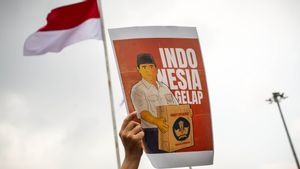JAKARTA - On January 23, 1978, Sweden announced it would ban the use of aerosol sprays containing chlorofluorocarbons (CFCs). Sweden became the first country in the world to do so.
Scientific evidence has shown that CFCs destroy the earth's ozone layer. Apart from the first country to ban aerosol sprays, Sweden was the first country to act on evidence that preceded the discovery of the ozone hole in Antarctica.
Quoting Earthsky.org, Saturday, January 23, ozone is a molecule consisting of three oxygen atoms. The ozone layer high in the atmosphere, about 15 to 30 km and above, surrounds the entire Earth. This layer protects life on the planet from the harmful effects of the sun's ultraviolet rays.
Nearly every country on Earth eventually follows Sweden in its ban on aerosol sprays through an international treaty known as the Montreal Protocol. In the 30 years since the ozone hole was discovered, scientists' understanding of the arctic atmosphere has become much more complete despite the world's response to slow recovery.
In the 1970s, scientists began to understand how using chlorofluorocarbons as refrigerants and aerosol propellants could reduce the Earth's ozone layer. The United States (US) began banning the use of aerosol sprays containing CFCs on October 15, 1978.
In the following decade, an international treaty called the Montreal Protocol on Substances that Deplete the Ozone Layer, was agreed upon by nearly all countries on Earth. The original Montreal Protocol entered into force on January 1, 1989.The treaty was designed to reduce the use of ozone-depleting chemicals and thus protect the Earth's ozone layer
The agreement prohibits the use of aerosol cans fueled by CFCs. In addition, this agreement also includes other ozone-depleting substances, such as halon which contains bromine. As it turns out, the transition to modern aerosol cans is easy. Most consumers do not see any difference between their favorite sprays as aerosol manufacturers start using other propellant gases.
Since 1989, the Montreal Protocol has been revised eight times, in 1990 (London), 1991 (Nairobi), 1992 (Copenhagen), 1993 (Bangkok), 1995 (Vienna), 1997 (Montreal), 1999 (Beijing) and 2007 (Montreal) .
In 2020, it is reported that persistent cold temperatures and strong circumpolar winds are contributing to the formation of the large and deep Antarctic ozone hole. The report comes a year after scientists noted the smallest additional hole in the ozone layer since it was discovered in 1982.
The size of the ozone hole over Antarctica fluctuates regularly. From August to October 2020, during late winter in the Southern Hemisphere when sunlight begins an ozone depletion reaction again, the ozone hole gets bigger, reaching a maximum between mid-September and mid-October. As high temperatures in the stratosphere begin to rise in the Southern Hemisphere, ozone depletion slows down, the polar vortex weakens and eventually breaks down. At the end of December 2020, ozone levels returned to normal.
Paul A. Newman, chief scientist for Earth Sciences at NASA's Goddard Space Flight Center, said that since the 2000 peak, chlorine and bromine levels in the Antarctic stratosphere have fallen about 16 percent towards natural levels.
"We still have a long way to go, the increase makes a big difference this year. The hole would be about a million square miles bigger if there was still as much chlorine in the stratosphere as in 2000," he said.
The English, Chinese, Japanese, Arabic, and French versions are automatically generated by the AI. So there may still be inaccuracies in translating, please always see Indonesian as our main language. (system supported by DigitalSiber.id)










